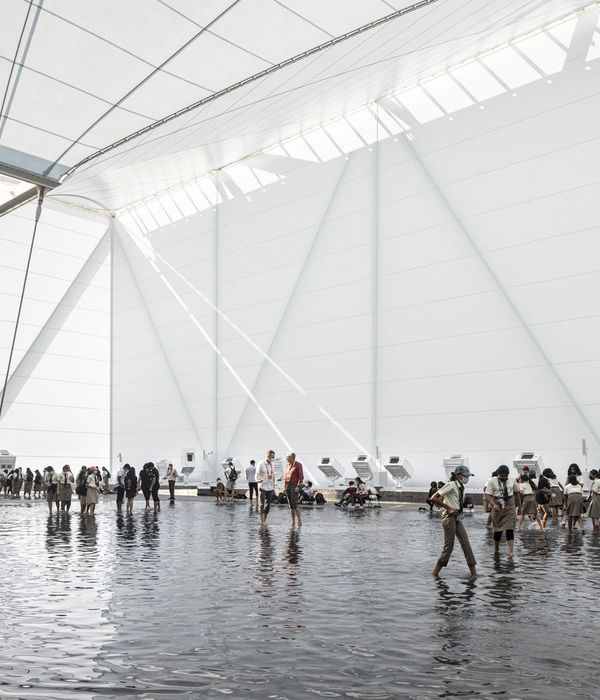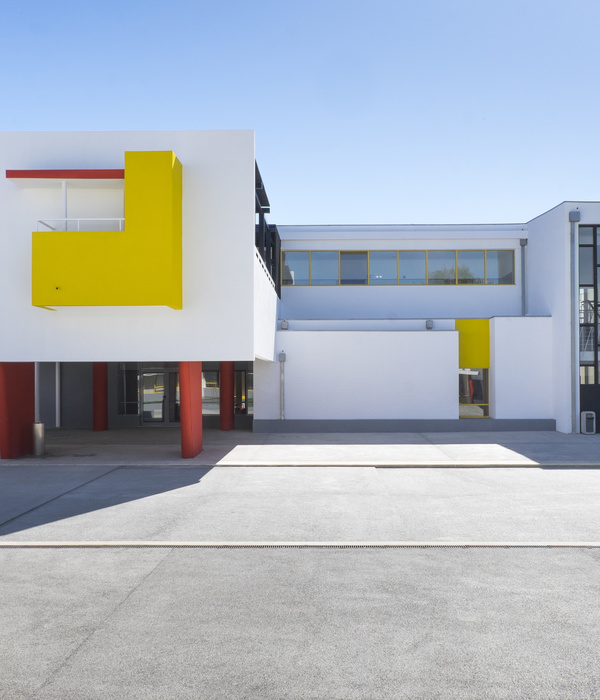98–100 De Beauvoir Road continues the practice’s work in the adaptive reuse of existing and historic structures such as Talkback, E.W. Pugin’s St. Monica’s, Hoxton, and the more recent schemes De Beauvoir Block, Laszlo and the Poppy Factory. 98–100 forms part of a range of early twentieth-century industrial buildings immediately west of De Beauvoir Square, and its listed Neo-Jacobean houses, in De Beauvoir Town, an area of London planned after the Grand Union Canal and Kingsland Basin were cut in the 1820s.
Workspace within De Beauvoir Town is limited so demand is high. These daylit, and naturally ventilated buildings have been planned to be let floor-by-floor, building by building, or (as it has transpired) as a campus for a single occupant. Each building has a new staircase, lift, and WC core. This low-carbon retrofit scheme retains much of the fabric and embodied energy in the brickwork, timber, cast iron, and in-situ concrete frame. And the craft-based low-tech building techniques employed indicate how elementary the construction of an office might be. Like the original fabric, everything is robust so it may endure with little maintenance.
Until recently the buildings’ calm brick façades concealed a morass of spaces, the result of more than a century of accretions and alterations. Our scheme reshapes space and rewires circulation both inside and out to create a small campus of studio workspaces. The design establishes a pair of quiet courtyards lined by walls of original pink fletton brickwork, and floors laid with a matt of brushed pink concrete. Each building has a new staircase. The one in 98 is concrete and ‘constructed’ within a new brick and timber structure. Behind a retained façade the new stair, lift, kitchens and WCs serve the restored front and rear buildings. Flights are cast as half-arches, bearing one upon another. New landings are in situ.
Behind the staircase, the studios are linked by a top-lit 3-story volume and, at each level, a cantilevered concrete gallery, with, overhead, a balloon frame of timber, enclosing these spaces. By contrast, the one in ‘100’ takes its cue from the ‘Anarchitecture’ of artist Gordon Matta-Clark and an early concern for the environment. The design makes a series of cuts in the original timber floors. Into these, steel staircases are suspended. Each convex or concave opening is trimmed by a steel beam on the tangent to the curve. Looking up, all the original timbers are visible, as is the underside of each stair tread. Pale hues emphasize the chiaroscuro effect of daylight permeating from the skylight above.
A loggia in the larger courtyard, along with doors (replacing windows) and a second stair allows for the floors to be subdivided and occupants to work outside. Finally, a new story has been added to both buildings. At 98, a new glazed steel and timber structure is protected from the low sun to the west by a precast white concrete loggia. To the rear, the existing in-situ concrete structure and steel trusses were preserved and refurbished, and glazing was optimized for daylight and thermal performance. On the roof of 100, a new pavilion frames a narrow court facing south and the city. Inside, the enfilade of spaces around the court are characterized by their expressed timber structure and, outside, these repeating volumes are wrapped in black EPDM rubber.
{{item.text_origin}}












